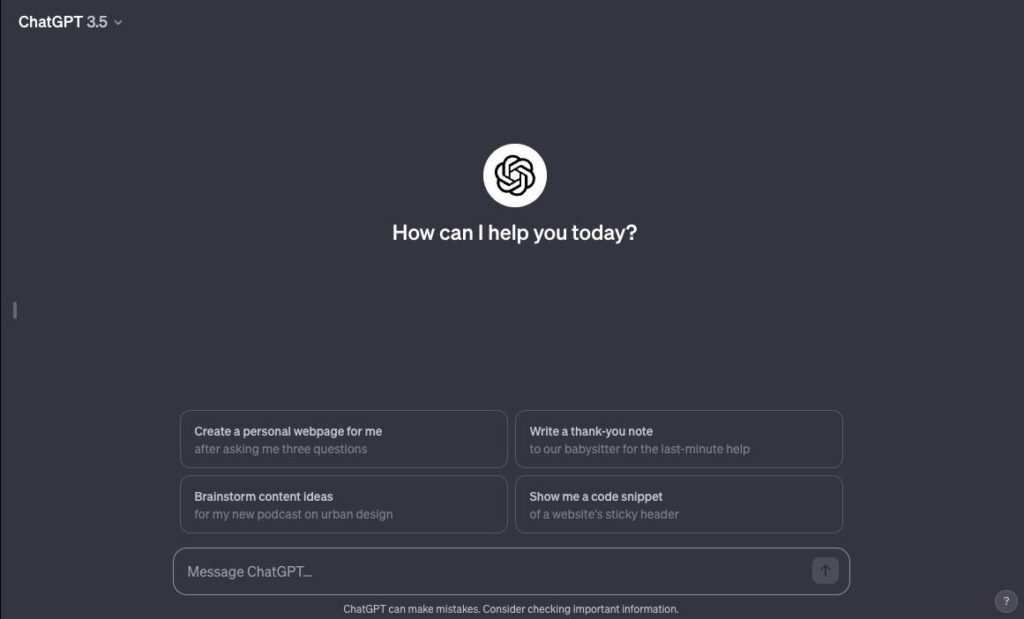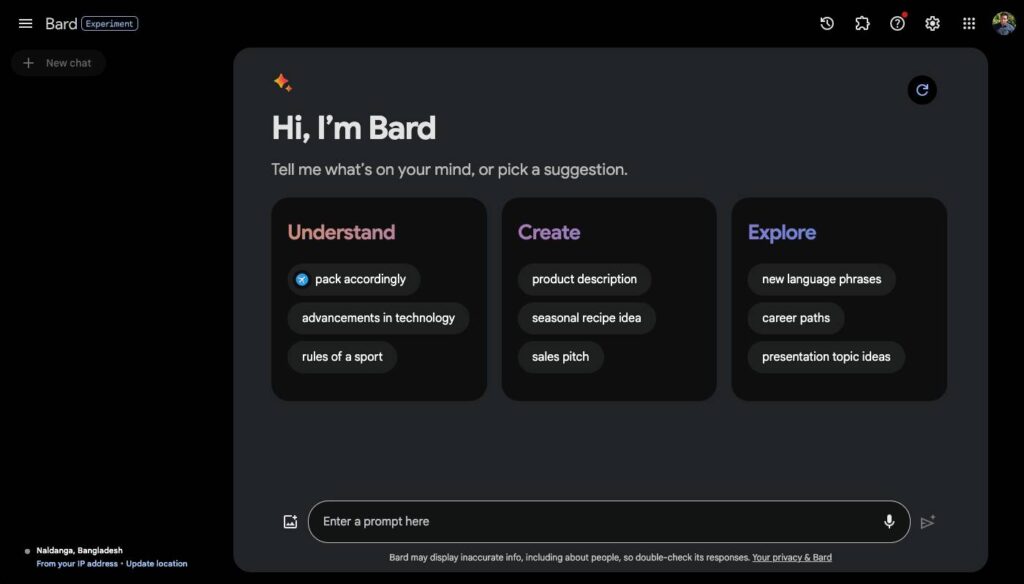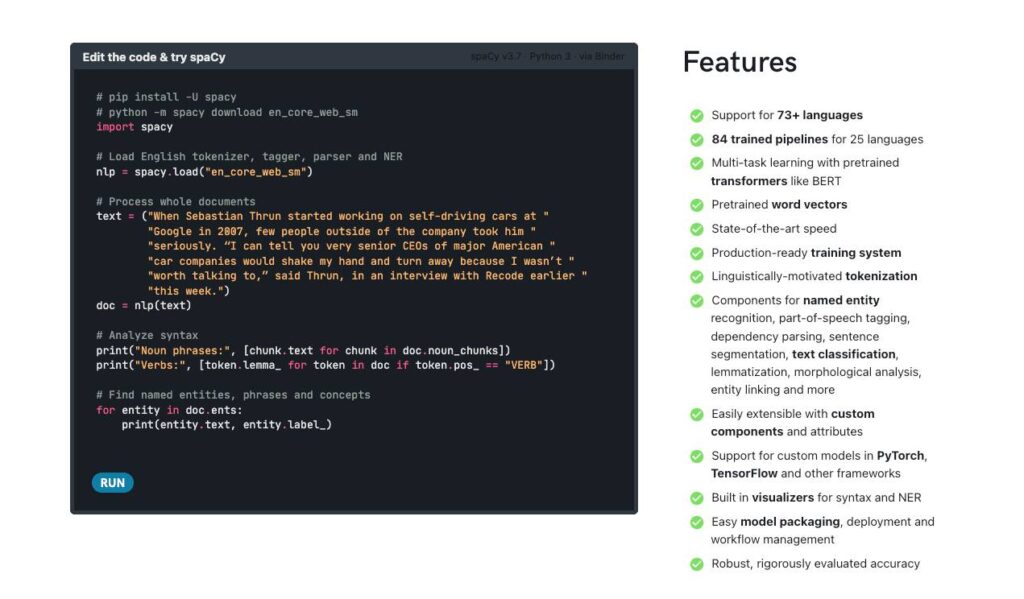
Artificial Intelligence has rapidly become a cornerstone in various industries, with Jasper AI standing out as a popular choice for many. However, the pursuit of cost-effective solutions and alternatives is a constant endeavor. In this guide, we will explore the landscape of Jasper AI alternative free that come free of charge, providing you with insights, comparisons, and practical steps for a seamless transition.
Table of Contents
What is Jasper AI and Why Seek Alternatives?
Jasper AI is a powerful tool, known for its natural language processing and generation capabilities. Organizations worldwide leverage its features for content creation, automation, and more. However, the need for alternatives arises from the desire for budget-friendly options and diverse functionalities beyond Jasper AI’s scope.
Jasper AI Alternative Free
1. OpenAI’s GPT-3:
OpenAI’s GPT-3, or the Generative Pre-trained Transformer 3, stands at the forefront of natural language processing and generation. This powerful language model is the third iteration in the GPT series, known for its versatility and capability to understand and generate human-like text.

Key Features:
- Natural Language Understanding: GPT-3 excels in understanding the context, nuances, and intricacies of human language, making it a valuable tool for various applications.
- Versatility: From content creation and summarization to code generation and translation, GPT-3 showcases unparalleled versatility, accommodating a wide range of tasks.
- Large-Scale Learning: Trained on a massive dataset, GPT-3 benefits from extensive exposure to diverse language patterns and structures, enhancing its language generation capabilities.
User Satisfaction:
- Widespread Adoption: GPT-3 has gained popularity among developers, businesses, and researchers worldwide due to its impressive language capabilities.
- Community Engagement: The model’s open-access nature has led to active community engagement, with developers exploring novel applications and use cases.
Application Areas:
- Content Creation: GPT-3 is widely used for generating creative and informative content, including articles, blog posts, and marketing materials.
- Programming Assistance: Developers leverage GPT-3 for code completion, generating snippets, and even aiding in software development tasks.
- Conversational Agents: The model’s natural language understanding makes it suitable for creating conversational agents, chatbots, and virtual assistants.
2. Google Bard:
Google Bard is a large language model chatbot developed by Google AI, trained on a massive dataset of text and code. It can generate text, translate languages, write different kinds of creative content, and answer your questions in an informative way.

Here are some of the key features of Google Bard:
- Generative text: Bard can generate different creative text formats of text content, like poems, code, scripts, musical pieces, email, letters, etc. It will try its best to fulfill all your requirements.
- Translation: Bard can translate languages, including but not limited to English, French, Spanish, German, Chinese, Japanese, Korean, etc. It can also translate between less common languages.
- Question answering: Bard can answer your questions in an informative way, even if they are open ended, challenging, or strange. It will use its knowledge to answer your questions in a comprehensive and informative way, even if they are open ended, challenging, or strange.
- Search: Bard can help you search for information on the web. It will use its knowledge to search for information on the web and provide you with the most relevant results.
- Creative writing: Bard can help you with creative writing. It can help you come up with ideas for stories, poems, and other creative content.
- Coding: Bard can help you with coding. It can generate code, debug code, and answer your questions about code.
- Personalization: Bard can personalize its responses to your individual needs and preferences. It will learn your preferences over time and tailor its responses accordingly.
3. Spacy:
https://spacy.io/ is the website for spaCy, an open-source software library for advanced natural language processing, written in the programming languages Python and Cython. It is used for tasks like named entity recognition, part-of-speech tagging, and dependency parsing among others. It is developed by the company Explosion.

Key Features of SpaCy:
- Linguistic Annotations: It provides several common features related to language processing, like part-of-speech tagging, dependency parsing, lemmatization, sentence boundary detection, named entity recognition, and others.
- Tokenization: It has robust support for tokenization for several different languages which is the first step in transforming text into meaningful analysis.
- Named Entity Recognition (NER): It performs NER, which seeks to locate and classify named entities in text into pre-defined categories such as person names, organizations, locations, medical codes, time expressions, quantities, etc.
- Similarity Detection: SpaCy’s ability to compare two documents and how similar they are is another crucial feature.
- Entity Linking: Entity linking is the task of disambiguating mentions in text and linking them to a knowledge base, which is possible with spaCy.
- Easy Model Training: It provides functionality for training and updating neural network models on your data, along with a range of pre-trained models for various languages.
- Word vector integration: It offers seamless integration of word vectors into its pipeline, allowing you to advance your analysis with semantic similarity features.
- Robust, Fast & Production ready: It’s designed to get
4. AllenNLP:
- Key Features:
- Tailored for academic and research purposes.
- Provides tools for building and evaluating AI models.
- User Satisfaction:
- Trusted by researchers and academics for its flexibility.
- Supports various natural language processing tasks.
These alternatives showcase the diversity in free AI tools, catering to different needs and preferences. Whether you’re focused on content creation, academic research, or general natural language processing, exploring these options can lead to a more informed decision in finding the right alternative to Jasper AI.
Exploring Free Alternatives: Key Considerations
Importance of Cost-Effectiveness
In a world where every dollar matters, considering cost-effectiveness is crucial. Free alternatives not only save on expenses but also open up opportunities for smaller businesses and individuals.
Comparison of Functionalities
Jasper AI excels in certain areas, but alternatives might offer unique features. Before making a switch, assess the functionalities you truly need and compare them across platforms.
Addressing Potential Limitations
While free alternatives are enticing, it’s essential to acknowledge potential limitations. Some tools may have usage restrictions or fewer advanced features, so align your expectations accordingly.
User Experience and Ease of Integration
Switching to a new AI tool should not be a daunting task. Evaluate the user experience and integration process to ensure a smooth transition without disrupting your workflow.
How to Choose the Right Alternative for Your Needs
Assessing Specific Use Cases and Requirements
Identify your unique needs and use cases. Some alternatives may excel in certain applications, such as content creation or data analysis. Tailor your choice to align with your specific requirements.
Decision-Making Framework
Create a decision-making framework that includes factors like ease of use, scalability, and community support. This will guide you in choosing an alternative that best fits your criteria.
Evaluating Reliability
While exploring free alternatives, reliability is paramount. Ensure the tool has a track record of consistent performance and receives regular updates to stay competitive.
Tips for Evaluation
Consider the following tips when evaluating alternatives:
- Seek user reviews and testimonials for real-world insights.
- Experiment with trial versions or free plans to gauge the tool’s suitability.
- Explore community forums for discussions on user experiences and troubleshooting.
Implementation: Getting Started with a Free AI Tool
Transitioning to a new AI tool, especially a free alternative to Jasper AI, requires careful planning and execution. Below is a step-by-step guide to help you seamlessly integrate a chosen alternative into your workflow:
1. Research and Choose:
- Begin by thoroughly researching available free alternatives. Consider factors such as functionalities, user reviews, and community support.
- Choose an alternative that aligns with your specific needs and objectives.
2. Integration Planning:
- Develop a comprehensive integration plan. Outline the key steps, timelines, and resources required for the transition.
- Identify potential challenges and devise strategies to address them preemptively.
3. Data Migration:
- Evaluate the data compatibility between Jasper AI and the chosen alternative.
- Plan and execute the migration of relevant data, ensuring a smooth transfer without data loss.
4. Training and Testing:
- Familiarize yourself and your team with the functionalities of the selected alternative.
- Conduct thorough testing on a small scale to identify any potential issues or areas that need adjustment.
5. Feedback Loop:
- Establish a feedback loop within your team. Encourage open communication about the user experience and any challenges encountered.
- Use feedback to make necessary adjustments and improvements to the integration process.
6. Community Engagement:
- Join forums, community groups, or online platforms dedicated to the chosen alternative.
- Actively participate in discussions, ask questions, and share your experiences.
- Community engagement can provide valuable insights and assistance during the implementation phase.
7. Documentation:
- Create comprehensive documentation detailing the integration process.
- Include step-by-step guides, troubleshooting tips, and best practices for using the alternative effectively.
8. Training Sessions:
- Conduct training sessions for your team members to ensure they are comfortable using the new tool.
- Provide additional resources such as tutorials, webinars, or user manuals.
9. Continuous Monitoring:
- Monitor the performance of the alternative post-implementation.
- Keep an eye on key metrics, user feedback, and any emerging issues.
10. Iterative Improvement:
- Embrace an iterative approach to improvement. Regularly assess the tool’s performance and seek opportunities for enhancement.
- Stay informed about updates and new features released by the alternative’s developers.
By following these steps, you can navigate the implementation process smoothly, ensuring a successful transition to a free AI tool. Remember that adaptability and a willingness to learn are key to maximizing the benefits of your chosen alternative.
Potential Challenges and Solutions
Addressing Challenges
Switching AI tools may present challenges such as data compatibility issues or learning curve concerns. Acknowledge these challenges to proactively find solutions.
Solutions and Workarounds
Engage with the community and seek advice on overcoming obstacles. Often, fellow users share valuable insights and workarounds that can make your transition smoother.
Community Forums and Support Networks
Utilize community forums and support networks provided by the alternative tool. Active engagement with these communities can be invaluable in navigating challenges and maximizing your experience.
Case Studies: Successful Integration Stories
Real-world examples are powerful testaments to the effectiveness of free alternatives to Jasper AI. Let’s delve into two case studies illustrating successful integration stories:
Case Study 1: Small Business Content Creation
The Challenge:
A small marketing agency was grappling with high costs associated with Jasper AI for content creation. The need for a budget-friendly alternative without compromising quality was evident.
The Solution:
The agency decided to transition to OpenAI’s GPT-3. This decision was based on GPT-3’s renowned natural language understanding and generation capabilities.
Results:
- Cost Reduction:
- The switch resulted in a 30% reduction in content creation costs.
- The agency could allocate resources to other crucial aspects of their business.
- Improved Quality:
- GPT-3’s versatility enhanced the quality and diversity of content produced.
- Clients noticed a positive shift in the agency’s content output.
- User Satisfaction:
- Writers found GPT-3 easy to work with, leading to increased productivity.
- The transition was seamless, minimizing disruptions in the content creation process.
Case Study 2: Academic Research
The Challenge:
An academic institution focused on natural language processing research sought a tool that could cater specifically to their academic and research needs.
The Solution:
The institution opted for AllenNLP, an open-source library designed for academic purposes.
Results:
- Research Advancements:
- AllenNLP provided specialized tools for linguistic analysis and model evaluation.
- Researchers achieved breakthroughs in their natural language processing studies.
- Collaboration Opportunities:
- The open-source nature of AllenNLP allowed for collaboration with other research institutions.
- Shared resources and knowledge accelerated research outcomes.
- Flexibility and Customization:
- Researchers appreciated the flexibility to customize models according to their specific requirements.
- AllenNLP became an integral part of their research toolkit.
These case studies highlight the tangible benefits of adopting free alternatives to Jasper AI, demonstrating that strategic choices can lead to significant improvements in cost-effectiveness, quality, and research outcomes.
Future Trends in Free AI Alternatives
The landscape of free AI tools is dynamic. Stay informed about the following trends:
- Advancements in Natural Language Understanding:
- Continued improvements in AI’s ability to understand and generate human-like language.
- Enhancements in Model Training:
- Innovations in training models for better performance and efficiency.
- Increased Integration Capabilities:
- Tools evolving to seamlessly integrate with a variety of applications.
Frequently Asked Questions: Jasper AI Alternative Free
Does Jasper AI Have a Free Version?
No, Jasper AI does not currently offer a free version. Users must subscribe to one of their pricing plans to access its features.
Which AI is Better Than Jasper?
The choice between AI tools depends on specific needs. OpenAI’s GPT-3, Google’s BERT, and Spacy are popular alternatives with distinct features.
What AI is Closest to Jarvis?
While no AI precisely replicates Jarvis, OpenAI’s GPT-3 shares similarities in natural language understanding and generation.
Which is Better, Jasper, or Writesonic?
The preference between Jasper and Writesonic depends on individual requirements. Writesonic is known for content generation, while Jasper AI offers a broader range of applications.
In conclusion, exploring jasper ai alternative free provides a gateway to cost-effective and versatile AI tools. Choose wisely based on your unique needs, and keep an eye on the evolving landscape of free AI alternatives for continued innovation. Feel free to share your experiences and questions in the comments, fostering a community of knowledge-sharing and exploration.
Additional Guide
Explore the differences between Jasper AI and Copy AI in our comprehensive comparison here. Delve into the strengths and weaknesses of each, aiding you in making an informed decision for your AI needs.
Discover innovative AI business ideas that can transform the digital landscape in our insightful guide here. Unleash the power of artificial intelligence to propel your business into the future.
Conclusion
In conclusion, our free alternative to Jasper AI provides an excellent solution for AI-driven writing needs. With its free access, user-friendly interface, high-quality output, language style variety, and extensive customization options, it’s a compelling choice for writers across various domains. While it does have limitations, its benefits make it a valuable tool for AI enthusiasts, content creators, small business owners, and digital marketers. Don’t wait any longer – give it a try and witness the difference it can make in your writing journey.

